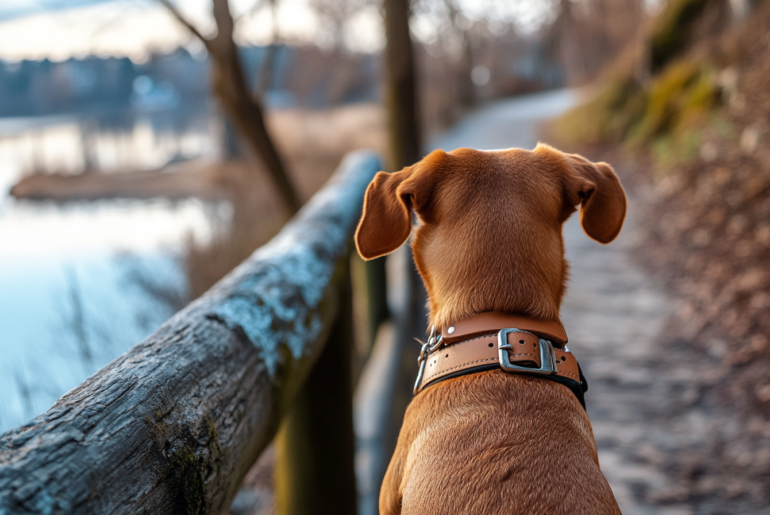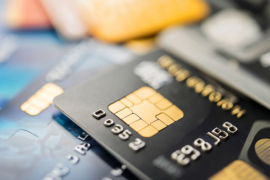This article may contain references to products or services from one or more of our advertisers or partners. We may receive compensation when you click on links to those products or services. Nonetheless, our opinions are our own.
The information presented in this article is accurate to the best of our knowledge at the time of publication. However, information is subject to change, and no guarantees are made about the continued accuracy or completeness of this content after its publication date.
Key Highlights
- Microchipping helps get your dog back safely if they get lost. It gives pet parents peace of mind.
- The process is quick and easy. A vet injects a microchip, which is the size of a grain of rice, under your dog’s skin. This is often done between the shoulder blades.
- Each microchip has a unique ID number. This number is linked to a database with the owner’s contact information.
- Prices can vary, but on average, microchipping a dog in the U.S. costs between $25 and $60.
- Make sure to register the microchip and keep your contact information up to date for the best results.
Introduction
Losing a pet is a hard time for any owner. Collars with ID tags can help, but they might get lost or damaged. A pet microchip gives you more security and peace of mind. This simple procedure is a popular way to provide a permanent ID for dogs. It increases the chances of a safe return if they go missing. Many owners also want to understand the process and costs. Let’s explore why microchipping could be a good choice for your furry friend.
Understanding Pet Microchipping
A microchip for your dog works like an ID tag placed inside their body. It won’t fall off like regular tags can. Instead of showing contact information, the microchip holds a unique ID number. This number links to a database where your details are stored.
This means that if your dog goes missing, the microchip can help return them to you, the worried family. Microchipping is important not only for pet owners but also for animal control and shelters all over the country.
What is a Microchip and How Does it Work?
A microchip is a tiny device, roughly the size of a grain of rice. It goes under your pet’s skin. This device is passive, meaning it doesn’t send signals or need a battery. It only turns on when a microchip scanner is used. You can usually find these scanners at animal shelters and veterinary clinics.
The scanner sends radio waves to turn on the microchip. This action prompts the microchip to send back its unique ID number to the scanner. The scanner then compares this number with a database of registered pets. If it finds a match, the database gives the owner’s contact information. This process helps return lost pets to their owners.
This technology is easy to use. Still, it plays a key role in helping lost pets find their families each day.
The Importance of Microchipping Your Dog
Even great pet owners can have bad luck and lose their dogs. This can happen if a dog slips out of a harness, runs out an open door, or gets scared by loud noises. When you find out your dog is missing, it can feel very stressful. A microchip can help in this situation.
A microchip does more than share contact information. It helps your dog have the best chance of getting home safely. Studies show that dogs with microchips are much more likely to be found and returned to their families.
This is important because normal ID tags can fall off, break, or become hard to read over time. When you decide to get a microchip, you are investing in your dog’s safe return if something goes wrong.
Voted "Best Overall Budgeting App" by Forbes and WSJ
Monarch Money helps you budget, track spending, set goals, and plan your financial future—all in one app.
Get 50% OFF your first year with code MONARCHVIP
Preparing for Your Dog’s Microchipping
Getting your dog microchipped is an easy thing to do. However, it is good to be ready for it. First, you should talk to your veterinarian about how the process works. You can also ask any questions or share concerns you may have. This is also a great time to schedule your appointment. Don’t forget to check if your pet’s vaccinations are up to date.
Microchipping is most effective when used with other responsible pet care practices. These practices include using the right identification tags. In some areas, you may also need to register with local authorities.
What You Need Before Microchipping Your Dog
Before you visit the veterinarian for the microchipping appointment, make sure to get some important things ready. First, have your personal information on hand. This includes your full name, current address, and a phone number where they can easily reach you.
If you have pet insurance, check to see if it covers microchipping. Some plans include this in their wellness benefits. It’s also a good idea to bring your dog’s medical records, especially if it’s their first visit.
Make sure your information is correct and current so the microchip works properly. If you move or change your phone number, remember to update this information in the microchip registry.
Choosing the Right Microchip and Vet
When picking a microchip, you need to find a veterinarian you trust. They should follow the rules of the American Veterinary Medical Association. There are different types of microchips available. Your vet can help you choose the right one that works with the scanners in your area and the rest of the country.
You should ask your veterinarian about their experience with microchipping. It is important to make the process easy and comfortable for your dog. A good vet will know how to make this happen smoothly.
Don’t forget to ask about aftercare procedures. This will help you feel sure that you can take good care of your furry friend after the microchipping.
A Beginner’s Guide to Microchipping Your Dog
Microchipping your dog is a simple process. If you know the steps, it can be easier for both you and your pet.
Let’s talk about the steps you need to take. We will start with setting up the appointment. Then, we will make sure your pet’s microchip information is up to date.
Step 1: Scheduling the Appointment
The first step is to find a vet or clinic that does microchipping. Many vets provide this service during regular check-ups. However, it’s smart to call and ask first. When you call, you can also:
- Make sure the clinic has a universal microchip scanner. This is important because it helps read different microchip registries.
- Inquire about the overall cost of the procedure. Prices can vary depending on your location and any extra services they may provide.
After you make the appointment, note any special instructions from the vet. This may include things like fasting or bringing your dog’s vaccination records.
Step 2: The Microchipping Process
The microchipping process is fast and usually takes only a few minutes. A vet uses a syringe to insert the microchip under your dog’s skin. This is usually done between the shoulder blades.
Most dogs feel just a little pinch during the implant. This feeling is similar to what happens during a vaccination. Some vets might recommend using a local anesthetic or pain relief. This is especially true for bigger dogs or those who have health problems.
Once the microchip is put in, the vet will scan it to see if it is working well. They will provide you with the unique ID number of the microchip and information on how to register it.
Step 3: Aftercare and Registration
Once your pet gets a microchip, it is important to take care of it and register it correctly. You should update your contact information if you move or change your phone number. Make sure to register the microchip with your details and keep it updated. This helps improve the chances of a safe reunion if your pet gets lost. Most microchip companies offer lifetime registration for a one-time fee. Also, remember to use an ID tag. This can increase the chances of a quick and safe return for your pet.
Costs Involved in Microchipping
One of the common questions pet owners have is, “How much does it cost to chip a dog?” Fortunately, it is an affordable process. It can provide great peace of mind.
The costs can vary depending on the provider and where you are. Generally, the average price includes the microchip and the procedure to put it in and usually covers the first registration.
Average Cost of Microchipping in the United States
According to Pawlicy Advisor, a top pet insurance marketplace, the average cost of microchipping a dog in the United States is as follows:
| Service | Average Cost |
|---|---|
| Microchip Only | $10 – $20 |
| Microchipping at a Vet Clinic | $40 – $60 |
| Microchipping at an Event | $10 – $25 |
The table shows that the cost can be much lower if you use events or certain organizations that usually have special deals.
It’s important to remember that these are average prices. Costs can change based on where you live and which veterinarian you pick. Always reach out to your local clinics to get the right pricing information.
Factors Influencing the Cost
The cost of a microchip can depend on more than the basic price. Some veterinary clinics offer package deals. These deals can include microchipping and other important pet care services. This might be things like vaccinations or annual check-ups.
Pet insurance is something else to consider. Some plans may pay for part or all of the microchipping fee under their preventive care or wellness benefits. If you have pet insurance, ask your provider if they cover this service.
The type of microchip can also affect the price a bit. Most microchips serve the same main purpose. However, there are small differences in their design or the technology used. These differences can cause changes in price.
Conclusion
Microchipping your dog is a smart choice to keep your pet safe. It helps you feel at ease, knowing your furry friend can be found if they get lost. You should learn about the process, costs, and what to do next. Pick a good vet and a trustworthy microchip for the best outcomes. The safety of your pet matters a lot. So, take this step to protect your beloved companion today. If you want to microchip your dog, just schedule an appointment with your vet. This way, you can give your pet the safety they deserve.
Frequently Asked Questions
Is microchipping painful for dogs?
The veterinarian will use a syringe to put the microchip in. He will place it between your dog’s shoulder blades. Your dog might feel a little pinch, but most dogs feel very little discomfort during microchipping. It is like getting a vaccination.
How long does a microchip last?
A pet’s microchip is designed to last forever. It has a unique number that does not need changing. However, remember to update your details with the microchip company for your lifetime registration.
Can a microchip track my dog in real time?
A microchip does not follow your dog in real time, even though many people believe it does. It doesn’t have GPS features. Instead, it can only be read by a microchip scanner. When someone finds your pet and scans it, they can see the pet owner’s contact information.
What should I do if my dog’s microchip fails?
If your dog’s microchip is not working, talk to your vet first. They can often insert a new microchip. Make sure to inform the animal shelter or vet if you change your phone number. This helps them update your contact information connected to the microchip number.
Are there alternatives to microchipping?
ID tags on collars are a simple way to identify your pet. However, they are not as dependable as microchipping. Even if your pet is microchipped, LA Animal Services and several other groups recommend using an ID tag. This is a crucial safety step, especially if your pet slips out through an open door.

Reviewed and edited by Albert Fang.
See a typo or want to suggest an edit/revision to the content? Use the contact us form to provide feedback.
At FangWallet, we value editorial integrity and open collaboration in curating quality content for readers to enjoy. Much appreciated for the assist.
Did you like our article and find it insightful? We encourage sharing the article link with family and friends to benefit as well - better yet, sharing on social media. Thank you for the support! 🍉
Article Title: Cost to Chip a Dog: The Smart Way to Protect Your Pet
https://fangwallet.com/2025/03/06/cost-to-chip-a-dog/The FangWallet Promise
FangWallet is an editorially independent resource - founded on breaking down challenging financial concepts for anyone to understand since 2014. While we adhere to editorial integrity, note that this post may contain references to products from our partners.
The FangWallet promise is always to have your best interest in mind and be transparent and honest about the financial picture.
Become an Insider

Subscribe to get a free daily budget planner printable to help get your money on track!
Make passive money the right way. No spam.
Editorial Disclaimer: The editorial content on this page is not provided by any of the companies mentioned. The opinions expressed here are the author's alone.
The content of this website is for informational purposes only and does not represent investment advice, or an offer or solicitation to buy or sell any security, investment, or product. Investors are encouraged to do their own due diligence, and, if necessary, consult professional advising before making any investment decisions. Investing involves a high degree of risk, and financial losses may occur including the potential loss of principal.
Source Citation References:
+ Inspo
There are no additional citations or references to note for this article at this time.












































